-
New, quick way to ID people exposed to dirty bomb, radioactive radiation
Research conducted by scientists from the Berkeley Lab could lead to a blood test that detects if a person has been exposed to radiation, measures their dose, and separates people suffering from inflammation injuries — all in a matter of hours
-
-
Deployable RF data backbone which matches fiber optic capacity
DARPA envisions 100-Gigabit per second RF communications link between airborne and ground assets; the goal is for the data link to achieve a range greater than 200 kilometers between airborne assets and a range greater than 100 kilometers between an airborne asset (at 60,000 feet) and the ground
-
-
EPA issues new soot pollution standard over industry’s objections
The Environmental Protection Agency (EPA), acting under court order, on Friday issued a new standard for soot pollution; the agency estimates the cost of complying to be between $53 million and $350 million – and the estimated benefits to be between $4 billion and $9 billion; utilities, manufacturers, chemical companies, and the oil and gas industry asked for a delay in issuing the rule, arguing it would be costly to implement
-
-
To keep global average temperature from rising above 2°C, action should be taken by 2020
Limiting climate change to target levels will become much more difficult to achieve, and more expensive, if action is not taken soon, according to a new analysis; a new study explores technological, policy, and social changes that would need to take place in the near term in order to keep global average temperature from rising above 2°C, a target supported by more than 190 countries as a global limit to avoid dangerous climate change
-
-
New view of meteorite impact
High-speed video of projectiles slamming into a bed of disks has given scientists a new microscopic picture of the way a meteorite or missile transfers the energy of its impact to sand and dirt grains; the research may change the way scientists model meteorite and missile impacts and their effects
-
-
U.S. Navy scientists honored for significant portfolio of newly patented discoveries and inventions
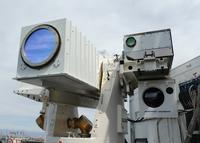
U.S. Navy scientists and engineers in 2012 once again had the world’s most significant government portfolio of newly patented discoveries and inventions, according to a November report published by the Institute of Electrical & Electronics Engineers (IEEE)
-
-
Top U.S., Canadian officials meet to discuss quickening pace of Arctic changes
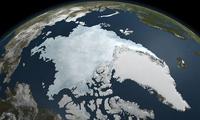
One manifestation of global warming is the accelerating pace of Arctic ice-cap melting; the U.S. Navy Arctic Roadmap, authored by the Navy’s Task Force Climate Change, notes that, “Because the Arctic is primarily a maritime environment, the Navy must consider the changing Arctic in developing future policy, strategy, force structure and investment”; top U.S. and Canadian officials meet to discuss the implications of the rapidly melting arctic ice
-
-
Sandy exposes weaknesses of antiquated sewage systems in N.Y., N.J.
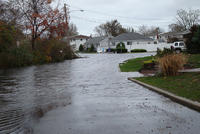
Hurricane Sandy destroyed homes, apartments, and entire communities, and it also exposed the outdated sewage systems in New York and New Jersey; since Hurricane Sandy, millions of gallons of raw sewage have infiltrated waterways in both states, and it could take several years and billions of dollars to fix the systems; New York governor Andrew Cuomo estimated that it will cost about $1.1 billion to repair treatment plants; officials in the field say that much more will have to be done
-
-
Engineers to build Australia’s first bushfire resistant straw house
With Australia’s bushfire season fast approaching, construction of the first bushfire resistant straw bale house tested by engineers from CSIRO has begun in rural Victoria; the house is based on design principles that minimize environmental impact and it is set to withstand temperatures equal to that of a worst case bushfire scenario
-
-
Technology emulates the Blind Cave Fish to help underwater vessels navigate with ease
Scientists have invented a “sense-ational” device, similar to a string of feelers found on the bodies of the Blind Cave Fish, which enables the fish to sense their surrounding and so navigate easily; using a combination of water pressure and computer vision technology, the sensory device is able to give users a 3-D image of nearby objects and map its surroundings
-
-
Target of limiting global warming to 2°C recedes as CO2 emissions grow
A new report shows that global CO2 emissions have increased by 58 percent since 1990, rising 3 percent in 2011, and 2.6 percent in 2012; the most recent figure is estimated from a 3.3 percent growth in global gross domestic product and a 0.7 percent improvement in the carbon intensity of the economy; these latest carbon dioxide emission figures continue to track at the high end of a range of emission scenarios, expanding the gap between current trends and the course of mitigation needed to keep global warming below 2°C
-
-
Terahertz waves for explosives detection
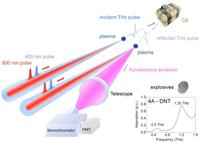
The chips generate and radiate high-frequency electromagnetic waves, called terahertz (THz) waves, which fall into a largely untapped region of the electromagnetic spectrum — between microwaves and far-infrared radiation — and which can penetrate a host of materials without the ionizing damage of X-rays; when incorporated into handheld devices, the new microchips could enable a broad range of applications in fields ranging from homeland security to wireless communications to health care, and even touchless gaming
-
-
Wind and solar power, paired with storage, would be cost-effective way to power grid
Renewable energy could fully power a large electric grid 99.9 percent of the time by 2030 at costs comparable to today’s electricity expenses, new research says; a well-designed combination of wind power, solar power, and storage in batteries and fuel cells would nearly always exceed electricity demands while keeping costs low, the study authors found
-
-
Climate models still struggle with medium- term climate forecasts
Scientists have evaluated twenty-three climate models and concluded that there is still a long way to go before reliable regional predictions can be made on seasonal to decadal time scales; none of the models evaluated is able today to forecast the weather-determining patterns of high and low pressure areas such that the probability of a cold winter or a dry summer can be reliably predicted
-
-
Marine robot completes 9,000 mile cross-Pacific journey, setting new world record
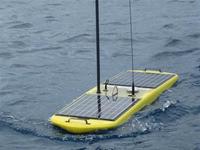
A wave-powered robot completes a 9,000 nautical mile (16,668 kilometers) scientific journey across the Pacific Ocean to set a new world record for the longest distance traveled by an autonomous vehicle
-
More headlines
The long view
New Technology is Keeping the Skies Safe
DHS S&T Baggage, Cargo, and People Screening (BCP) Program develops state-of-the-art screening solutions to help secure airspace, communities, and borders
Factories First: Winning the Drone War Before It Starts
Wars are won by factories before they are won on the battlefield,Martin C. Feldmann writes, noting that the United States lacks the manufacturing depth for the coming drone age. Rectifying this situation “will take far more than procurement tweaks,” Feldmann writes. “It demands a national-level, wartime-scale industrial mobilization.”
How Artificial General Intelligence Could Affect the Rise and Fall of Nations
Visions for potential AGI futures: A new report from RAND aims to stimulate thinking among policymakers about possible impacts of the development of artificial general intelligence (AGI) on geopolitics and the world order.
Smaller Nuclear Reactors Spark Renewed Interest in a Once-Shunned Energy Source
In the past two years, half the states have taken action to promote nuclear power, from creating nuclear task forces to integrating nuclear into long-term energy plans.
Keeping the Lights on with Nuclear Waste: Radiochemistry Transforms Nuclear Waste into Strategic Materials
How UNLV radiochemistry is pioneering the future of energy in the Southwest by salvaging strategic materials from nuclear dumps –and making it safe.
Model Predicts Long-Term Effects of Nuclear Waste on Underground Disposal Systems
The simulations matched results from an underground lab experiment in Switzerland, suggesting modeling could be used to validate the safety of nuclear disposal sites.
